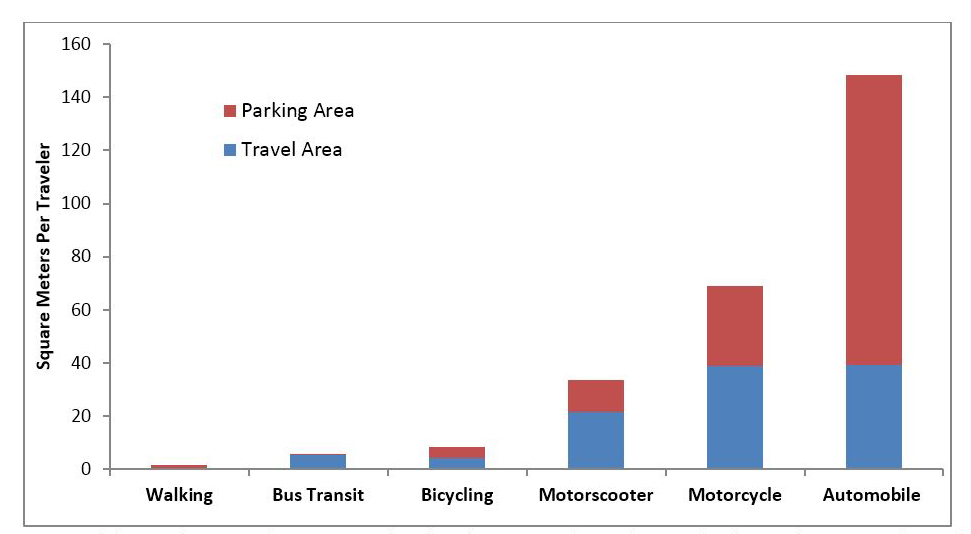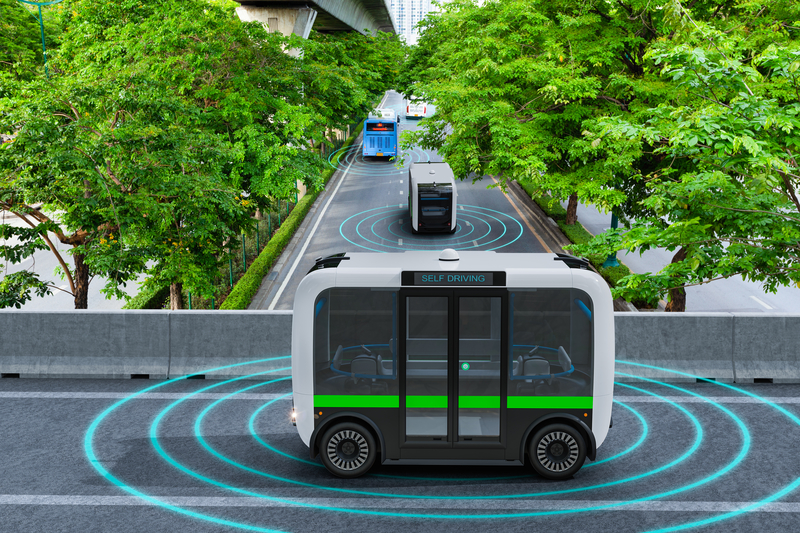Rather looking to solve congestion by spreading the load, perhaps we need to look at concentrating it. Michael L. Sena writes. We humans were made to walk and run at embarrassingly slow speeds by comparison with other, more fleet-footed organisms. The sea is not our natural habitat and we were definitely not designed to fly unaided. Nevertheless, humankind has evolved a method of living during the past century that is dependent on transporting its members over very long distances during relatively short per

Milton Keynes was designed in the 1960s to combine telecommunications and car ownership to solve the issue of community (Picture: The Homes and Communities Agency)
Rather looking to solve congestion by spreading the load, perhaps we need to look at concentrating it. Michael L. Sena writes
We humans were made to walk and run at embarrassingly slow speeds by comparison with other, more fleet-footed organisms. The sea is not our natural habitat and we were definitely not designed to fly unaided. Nevertheless, humankind has evolved a method of living during the past century that is dependent on transporting its members over very long distances during relatively short periods of time. For many of us trains, planes and mostly automobiles are now integral parts of daily life.It is not just that we have changed our habits by changing our principal mode of transport from feet to wheels or wings; we have created physical changes in our environments that are the direct result of using different methods of transport. Urban sprawl, or haphazard growth extending in all directions from the edges of our 19th century (and older) cities, is now the norm. These changes now severely restrict walking as a viable option as we are no longer within realistic reach of anything or anyone. We struggle to optimise multiple variables in our lives' linear equations, and these equations grow ever-more difficult to solve: where we live; where we work or attend school; where we buy our provisions; where we enjoy our recreational time; and where we worship.
Pre-sprawl, people lived close to their work. Prior to the rail networks which were built in the late 1800s, the small communities surrounding large cities were independent, self-sufficient nodes of commerce. The rail lines which radiated from cities' centres transformed them into bedroom communities but most retained their commercial, cultural and civic identities. Post-sprawl city regions now have multiple centres, with more jobs located in what used to be their suburbs than what were once their Central Business Districts (CBDs). Villages have been incorporated into conurbations and, while they may maintain their political independence, are part of an amorphous ground cover. Radial rail transportation networks and collector bus lines no longer function effectively because origins and destinations are no longer clustered, and the car is the only convenient means of transport.
Calls for resolution
There are increasing calls from governments in Europe, North America and parts of Asia to resolve the environmental impacts of sprawl (principally, emissions and noise, traffic congestion and depletion of natural resources). ITS will definitely help the existing infrastructures to function more smoothly and the steps we are taking to reduce transport-related pollution at its sources by building more efficient and less polluting vehicles are beginning to have an effect. However, there are disconnects between land use and transport policies. Sprawl is the inevitable result of two interlinked causes: poor urban planning on the part of governments to build regions that promote congestion-causing movement; and conscious business decisions backed by political policies, legislation and financial incentives that have placed highest and best use of the land ahead of transport effectiveness and habitat quality.Governments' principal responses have been to raise fuel taxes, pedestrianise central city streets and reduce parking spaces in CBDs, and to institute highway tolls and urban congestion zone charges, all in an effort to move people out of their cars and companies out of truck deliveries in order to promote collective transportation and rail freight. These proposed cures start at the wrong end of the problem, with the symptom not the illness, and they are more likely to result in more sprawl rather than less as citizens and businesses attempt to avoid the extra costs and inconveniences imposed on them.
Consider the issue of shopping for everyday needs. 'Big box' low-cost retail chains such as the US's Walmart and Europe's Carrefour have become the main suppliers of all types of goods, especially food. The acres of floorspace and adjacent parking they require take enormous amounts of land on the edges of cities, where it is cheap and plentiful. They have fine-tuned their stocking processes to minimise on-site storage and maximise selling space, and their large delivery trucks function like rolling warehouses, making multiple drops per day to stores from vast regional distribution centres. Their low prices attract large numbers of shoppers, generating more traffic. Smaller businesses cannot compete with these megastores' super-low food prices - especially on food, which is subsidised in order to attract the largest number of customers to other goods.
Another growing traffic generator is the school run. For a combination of reasons children do not walk to school anymore, either alone or in groups. One reason is that lower-density housing and larger, centralised schools have resulted in schools being too far from home to make walking or cycling practical. While the population of the US grew by 70 per cent between 1940 and 1990, the total number of elementary and secondary schools fell by 69 per cent. In a 2001 study by the US National Household Travel Survey, researchers found that fewer than 15 per cent of students in the US between the ages of five and 15 walked to and from school; only 1 per cent cycled. In 1969, 48 per cent of students in the same age group walked or cycled to school. Another US study showed that in 1999, only 31 per cent of students in the same age group who lived within one mile of school walked or cycled. In 1969, close to 90 per cent did so. Even if children live close to a school, increased acceptance of school choice means that they might not attend it. Add in concerns about child safety (which, ironically, arise in part from the traffic generated by parents driving their children to school) and the result is the daily school run occurring at the same time in the morning as the work commute.
Reducing driving: a solution?
The use of the private car between workplace and home is now one of the major targets of anti-driving campaigns. This is particularly troubling. We can in large part decide where to live, shop, recreate and where to send our children to school, and potentially minimise our use of the car to make those journeys, but deciding where and when to work may be difficult if not impossible.What should we do to try to reduce all the moving around to get to those places where we can do something enjoyable and productive? Some say it is fruitless to try to stop sprawl: that it is the natural consequence of free choice and we should live with and work around it. Through road charging, at least governments can gain some financial benefits from it, they argue. Teleworking is also offered as an alternative to commuting. Intel, Microsoft, Google,
Starting over
Others suggest starting over, taking up the old practice of building completely new towns. Wasn't the UK's Milton Keynes, built in the rolling countryside between London and Birmingham, supposed to be the model for the city of the future - the city that was built for the motor car? Designed in the 1960s and under construction for the past 40 years, it was to be everything that existing cities were not, able to absorb all of the private cars that its inhabitants would inevitably want to drive while keeping the idyllic nature of the residential districts. The kilometre grid plan of Milton Keynes was inspired by urban theorist Melvin M. Webber, who claimed that the radial city was dead and that telecommunications combined with increased car ownership would allow, in his words, "community without propinquity". The jury is still out on whether the concept works at the micro-scale level of Milton Keynes proper but our regions of sprawl have compromised both our social and physical nearness.Back to work
A third option is to focus on rebuilding our existing major cities as employment magnets through both regulations (such as prohibiting campus-type office developments in suburban or rural areas) and incentives (for example, rewarding reduced amounts of driving by offering bonus points for transit travel). The current trend of reinvigorating our cities by making them into theme park tourist attractions and empty-nest or no-nest dormitories is counterproductive. The city in history has been a place of commerce. Today, half of the world's population lives in cities and this will grow because in the developing world that is still where the jobs are.With well-functioning rail, rail rapid transit or express buses, along with feeder bus lines to multimodal park-and-ride facilities, cities in North America and Europe can once again be easily reached by the majority of a region's inhabitants. Instead of spreading office parks around the suburbs where the only way of reaching them is by car, put them back in the city. Safe, clean and inexpensive multimodal park-and-ride facilities are the key to gathering workers who drive or take buses and transporting them by high-speed rail quickly to their work. Severely restrict or eliminate altogether private cars completely from the streets of the cities. Replace them with enough vehicles that can get people to and from their workplaces. Ensure that the sidewalks are safe (free of crime) and clean (free of snow and ice) so that walking is encouraged.
The major advantage of workplace re-concentration is that it solves one of the variables, perhaps the most important, in life's linear location equation: work. Cross-region and reverse commuting to inaccessible suburban and rural worksites will be eliminated. It will take time for people to learn how to shop locally again, to send their children to neighbourhood schools, to separate transportation from recreation, and to pray closer to home, but I would be willing to wager that once the jobs location problem is solved, the other issues will sort themselves out.










